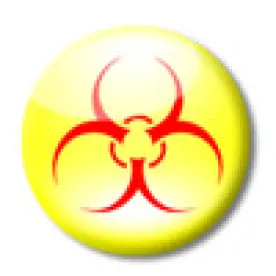On June 22, 2017, the first anniversary of the Lautenberg TSCA amendments, the U.S. Environmental Protection Agency (EPA) released its final rule to “reset” the Toxic Substances Control Act (TSCA) Chemical Substance Inventory. The goal of this new rule is to subdivide the Inventory into separate lists of “active” and “inactive” substances. EPA will include these active and inactive designations on the TSCA Inventory as part of its regular publications of the Inventory.
Significantly, the rule gives industry 180 days to report chemicals manufactured (including imported) for non-exempt commercial purposes in a ten-year period (“lookback period”) that ended on June 21, 2016. This rule has not yet been published in the Federal Register, but when it is, the 180-day clock starts. For the prepublication copy of the rule, click here.
Important changes occurred between the final rule and the rule as proposed on January 13, 2017 (82 Fed Reg. 4,255, see our summary of the proposal [here]). Below we highlight the changes and analyze the final requirements under the new rule and their practical implications.
Changes from the Proposal
Based on the numerous comments that EPA received during the proposal’s notice and comment period, EPA made many significant changes to the rule:
-
EPA eliminated the requirement to indicate in “retrospective” notifications made under the rule the first and last day of manufacture and import during the 10-year “lookback” period. The proposed requirement to specify information about the type commercial activity has also been deleted.
-
EPA will not require retrospective reporting for chemicals where the Agency already has equivalent notice of active status. This means that no notification will be required for non-confidential chemicals reported for the 2012 or 2016 Chemical Data Reporting (CDR) requirement, and no notification is required for confidential 2012 or 2016 CDR chemicals if the manufacturer or importer no longer claims the chemical identity as confidential business information (CBI). Also, all “new” chemicals added to the Inventory on or after June 22, 2016 are exempt from the retrospective notification requirement.
-
Chemicals added to the Inventory during the 10-year “lookback” period do not require notification.
-
Under what could be called a “one-and-done” approach, a manufacturer does not have to submit a retrospective notice if it obtains a central data exchange (CDX) receipt from another company that notified the same substance.
-
Processors can voluntarily report to EPA no later than 420 days after the final rule is published. This timeframe was increased from the 360 days in the proposal.
-
With respect to “forward looking” reporting for inactive substances, the rule will require manufacturers, importers, and processors to notify EPA with their intent to reactivate an inactive substance not more than 90 days before the “anticipated date” of manufacturing or processing. This was increased from 30 days in the proposed rule.
-
A substance is not formally designated as “inactive” until 90 days after EPA has identified the substance for inactive designation.
-
The validity of a Form B notice to activate an “inactive” substance can be achieved with documented intent to manufacture or process, and does not depend on whether the intended manufacturing or processing occurs by the anticipated date.
Practical Requirements Under Final Rule
-
EPA will require notifiers to use newly developed “Notice of Activity” (NOA) reporting forms. NOA “Form A” would be used by manufacturers, importers, and processors for retrospective reporting. NOA “Form B” would be used by manufacturers, importers, and processors for forward-looking reporting. The proposed forms are based on the well-known TSCA Notice of Commencement (NOC) form, as the proposed information requirements are substantially similar.
-
Form A reporting will be required for manufacturers and importers who produced a chemical substance subject to commercial activity designation (a substance that was added to the TSCA Inventory before 6/21/06, is not interim active, is not “naturally occurring,” and has not yet been designated as active or inactive by EPA) for a non-exempt purpose at any time during the “lookback” period. The only exceptions to this are if a person has a CDX receipt documenting EPA receipt of a Form A for the same substance, or if the prior manufacture of the substance is not known or reasonably ascertainable.
-
Form B reporting is required for any person who intends to manufacture, import, or process an inactive substance for a non-exempt purpose after the effective date of EPA designating that substance as inactive. As noted above, these forms need to be submitted before actual manufacturing or processing but not more than 90 days prior to the anticipated date of manufacturing or processing.
-
Processors are not required, but may voluntarily report via Form A during the retrospective reporting period.
-
If no notifier makes a CBI claim for a substance, EPA will move the substance from the confidential to the public portion of the Inventory.
-
Exemptions to the reset rule reporting include: non-“chemical substances” (e.g., foods, pesticides), R&D and test marketing substances, substances in “articles” that are processed or imported, byproducts and impurities, labeled export-only substances (unless a 12(a)(2) finding is made), and “naturally occurring” substances (unless produced synthetically).
-
Manufacturers and importers of a substance under a LVE/LOREX/Polymer exemption will need to notify if the substance is on the public version of the Inventory, or if it is “reasonably ascertainable” by the manufacturer or importer that the substance is on the confidential version of the Inventory.
-
Form A’s must contain: company, official technical contact, CASRN, CA Index name, Accession No. and required certification statements. Form B must contain the same information as Form A, as well as the “anticipated” date by which substance is to be manufactured or processed in the U.S.
-
Reporters using Form A will be able to seek to maintain an “existing” CBI claim for specific chemical identity (for substances listed on the confidential Inventory only).
-
Requests to maintain existing CBI claims for specific chemical identity for “forward-looking” reporting on Form B (for substances listed on the confidential Inventory only) must be made on the Form B and substantiated not later than 30 days after submitting the Form B.





 />i
/>i


